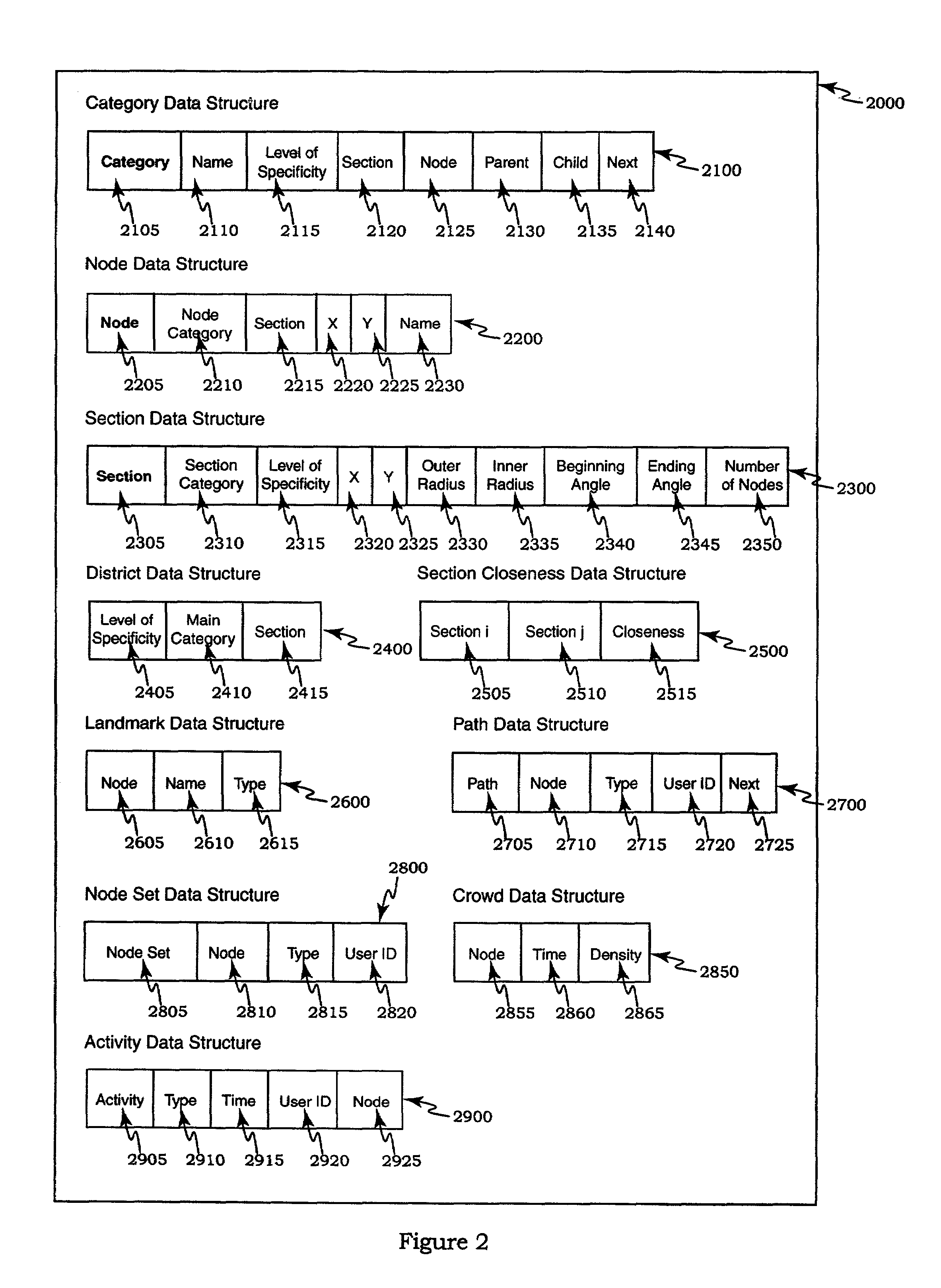System, method and program product for providing navigational information for facilitating navigation and user socialization at web sites
a navigation information and web site technology, applied in the field of systems, can solve the problems of inability to provide a site map with one, inability to encode inter-relationships, and inability to scale effectively, so as to promote various interactions among users and encourage repeated and frequent social interactions
- Summary
- Abstract
- Description
- Claims
- Application Information
AI Technical Summary
Benefits of technology
Problems solved by technology
Method used
Image
Examples
Embodiment Construction
[0045]This invention is a computer system, method, and program product for collecting, tracking and mapping social information at a Web site to facilitate user socialization with and social visualization at the Web site. The present invention consists of a mapping data structure representing two or more categories. Each of the categories is divided into subcategories of ordered levels of specificity. Each of the ordered levels of specificity is also grouped into subcategories of the same levels of specificity. Closeness of items in two or more different categories and levels of specificity is captured by the way data is stored and organized in the mapping data structure. This mapping data structure overlays information about people, activities, and social interactions at a Web site onto the same internal representation that exposes the semantic structure of the contents of the Web site. By grounding the social information within the same representation used to express the purpose an...
PUM
 Login to View More
Login to View More Abstract
Description
Claims
Application Information
 Login to View More
Login to View More - R&D
- Intellectual Property
- Life Sciences
- Materials
- Tech Scout
- Unparalleled Data Quality
- Higher Quality Content
- 60% Fewer Hallucinations
Browse by: Latest US Patents, China's latest patents, Technical Efficacy Thesaurus, Application Domain, Technology Topic, Popular Technical Reports.
© 2025 PatSnap. All rights reserved.Legal|Privacy policy|Modern Slavery Act Transparency Statement|Sitemap|About US| Contact US: help@patsnap.com



